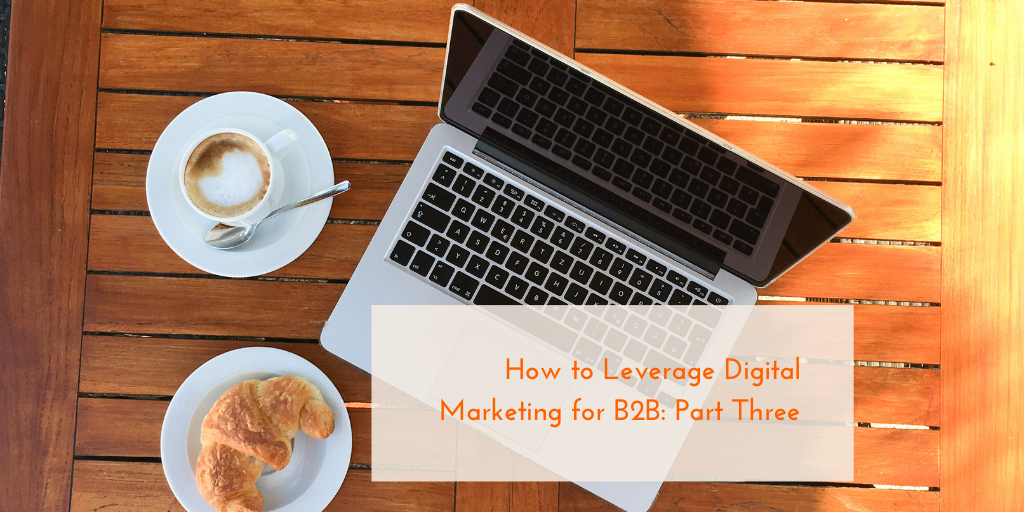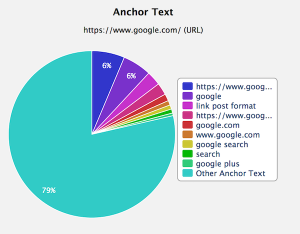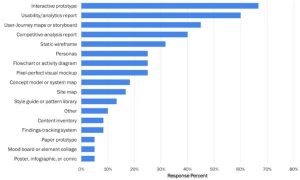
How to Leverage Digital Marketing for B2B: Part 1
How to Leverage Digital Marketing for B2B: Part 2
By now, it’s clear that B2B companies should invest in digital marketing strategies in order to continue growing in 2020 and beyond. But digital marketing is so much more than a website and an active social media account. Digital marketing is a process that requires strategy and investment on a regular basis—a very regular basis. Daily, and sometimes hourly, in fact.
Here’s the thing: Google loves fresh content. And they love to help you climb to the top of the search engine results lists through advertising. Let’s break this down one piece at a time so you can see the importance of each specific piece of the puzzle.
Developing Content
Even without the special preference given by Google for websites that provide fresh content, your content would still be just about the most important marketing tool you have in your toolbox. After all, without your words, how would your potential buyers know even one thing about you?
Your website content, blogs, social media posts, published articles, videos, and any other words you share—however you may share them—serve to educate your buyers so they know the exact benefits they receive from purchasing your products or services.
One blog isn’t going to do the trick, either. More than half of all B2B buyers view at least eight pieces of content during the purchase process, and 82% of buyers viewed at least five pieces of content from the vendor prior to purchase. If you don’t have that much information available, you can bet the potential buyer has already looked somewhere else for their answers.
Don’t just jump in without a plan, either. 69% of successful B2B marketers have a documented content marketing strategy. You need to map out the content your buyers need, how you plan to deliver that information, and where your buyers are most likely to consume it. Prepare content for every stage of the buyer’s journey so you can reach them at any time, wherever they may be in the decision-making process, but give special attention to those who have just started their search for a solution. Right now, 50% of the content created by B2B marketers is for audiences in the early stages of their customer journey.
Couldn’t you just advertise? Of course, and we’ll talk about that next. But before you put off planning your blog in favor of investing in PPC and television spots, remember this: 80% of business decision-makers favor getting brand information via an article series more than ads.
Benefits of SEO
One more huge benefit you receive from content, as if educating your buyers throughout the buying process isn’t enough, is the benefit of search engine optimization. The more you share, the more chances Google has to find your website over your competitors. This is another reason to develop a content strategy before jumping right in. You can plan out the search terms and specific keywords you believe your buyers will use to find you. Then you can develop your content around those words to ensure you use the search terms often enough to show up in Google searches for those specific topics.
Now, unless you’re the only business in your specific category, you will have competitors vying for results using the same keywords and search terms you do. This is one reason people will put so much money behind their Google Ads and other advertising options. We definitely advocate for the benefits of Google advertising, but there are other strategies you can use to drive more traffic to your site—and more qualified traffic, at that.
Longtail keywords are search phrases that relate specifically to your business and the products or services that you sell. Rather than fighting over “accountant” as your keyword, add more descriptors to drive buyers right to your door. Consider specific benefits buyers will receive, where they might live (as it relates to where you practice business, of course), and the budget that buyer might have. For instance “small business accounting services in San Antonio on a budget.”
The biggest benefit you get from using longtail search phrases is that people are often ready to make a purchase if they find your site with specific searches such as the example above. This is also a key tactic to use when setting up your Google Ad campaigns.
Pay-Per-Click
On average, B2B researchers do twelve searches before engaging on a specific brand’s site. You can fight over keywords and search phrases to show up in organic searches as often as possible, but you can also give those results a boost by showing up very first in the promoted section of the results.
Again, as with the keywords you use with your content, you’ll fight your competitors for positioning. Longtail phrases added to your keyword selection can help you narrow down your searchers and attract those who are looking for your specific products or services. Be sure to use negative keywords—those search phrases you don’twant to be found for—so you don’t pay for a lot of clicks that aren’t relevant to your business.
Right now, only 58% of B2B marketers pay to advertise on search engines and believe it is the most effective paid method of digital marketing. That means you have some room to move, at least for now, as other companies begin to wake up to the opportunities that PPC offers.
As you create your PPC campaigns, you must keep the buyer’s journey in mind. Create landing pages that meet every single step of the journey so that your potential customers have a chance to connect with you the moment they’re ready.
Finally, give these ads some time to work. You will see an immediate increase in traffic, but the numbers may not match your expectations. Look back to the first statistic we shared in this section to understand why time is crucial to your PPC campaigns. Your potential buyers will search an average of twelve times before they decide on someone. They’ll click on your website several times before they make the decision to engage. If you get frustrated and slash your PPC budget or, worse, cancel altogether, you’ll lose the momentum you paid to build.
Social Media Advertising
Google Ads aren’t the only way you can reach your potential buyers. Only 58% of B2B marketers use PPC, but 84% of B2B marketers use other paid distribution channels for content marketing. Social media platforms also offer the ability to reach your specific target audience with ads and boosted posts. Before you decide that’s not for you, consider that 65% of B2B companies have acquired a customer through LinkedIn paid ads.
Maybe Facebook, Instagram, and Twitter aren’t the places you’ll get the best bang for your buck with social ads, but you can definitely increase awareness with these platforms. Rather than giving the hard sell with these consumer-focused outlets, consider sharing informational (and entertaining) content to gain exposure.
Then, when decision-makers who saw your content on their “fun” channels see you advertising on LinkedIn, they already recognize your brand.
As an added bonus, social media accounts are also results in a search engine query. With updated information, fresh content, and regular advertising, you could dominate the top of the search engine results with your company website, Facebook page, and LinkedIn business profile.
Digital & Social Articles on Business 2 Community
(59)
Report Post







